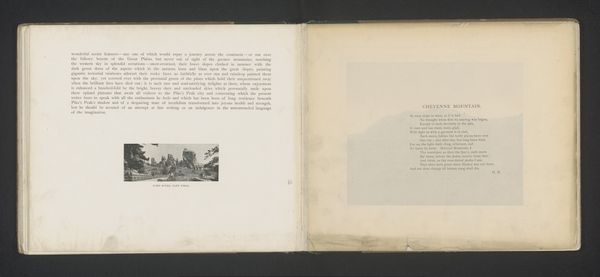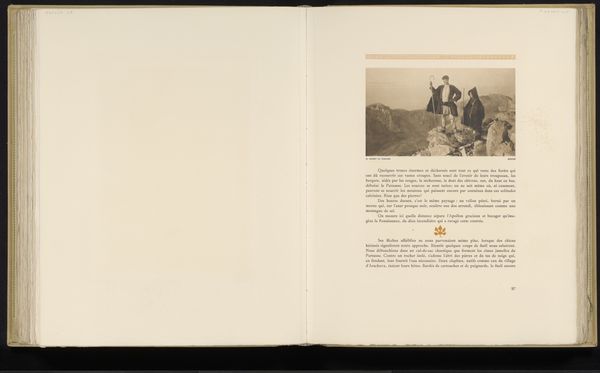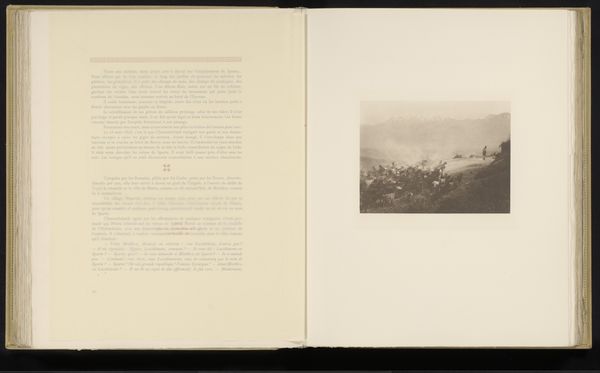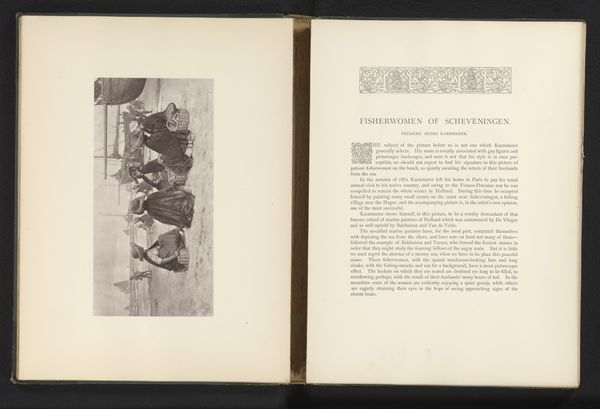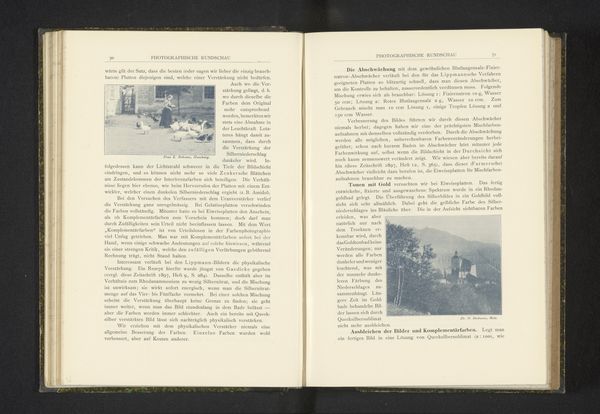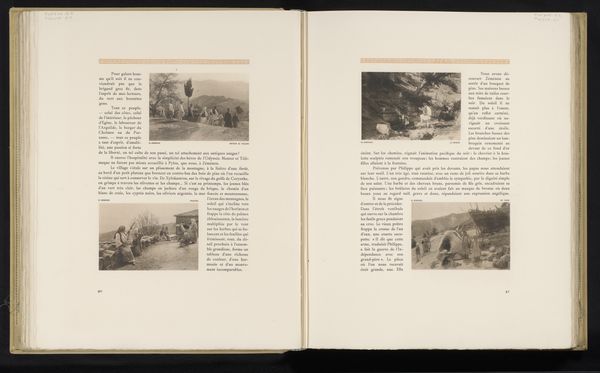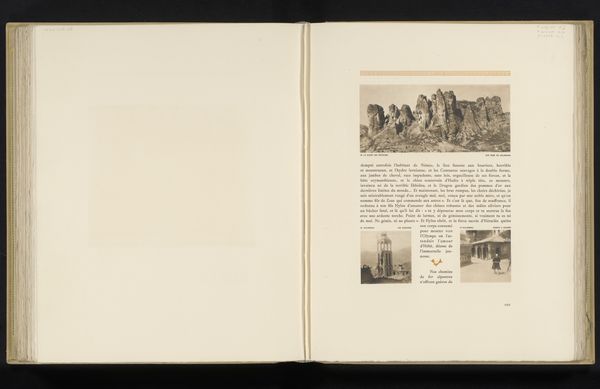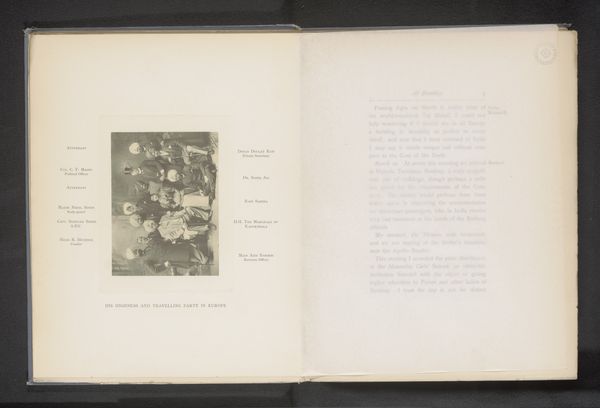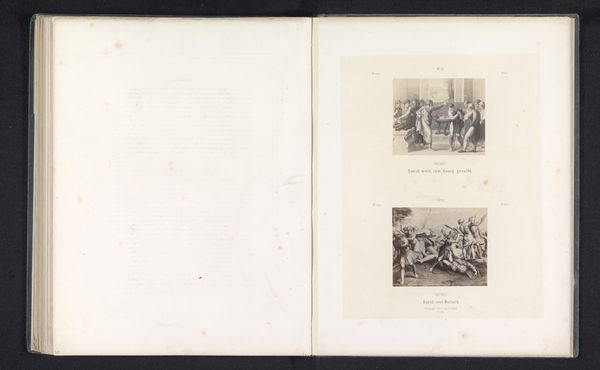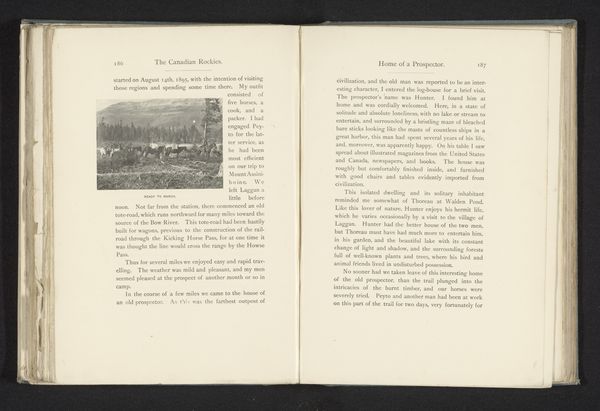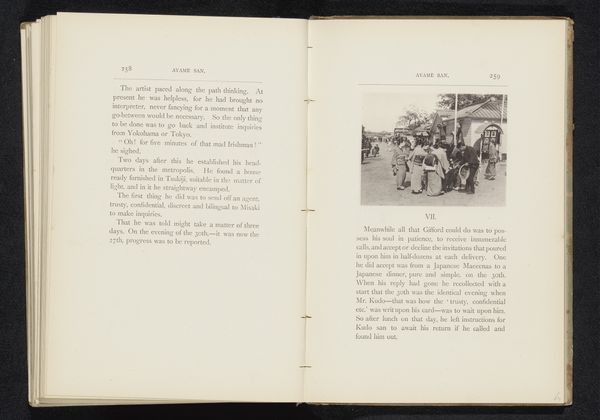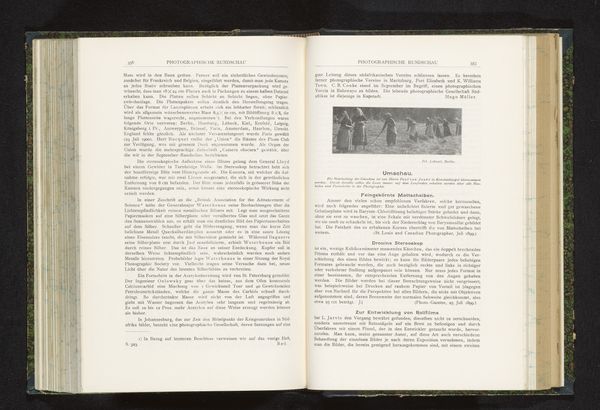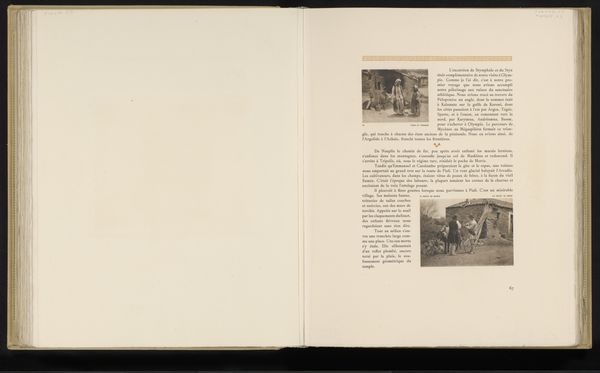
print, photography
# print
#
landscape
#
photography
#
group-portraits
#
genre-painting
#
realism
Dimensions: height 64 mm, width 150 mm
Copyright: Rijks Museum: Open Domain
Editor: Here we have Frédéric Boissonnas’s print titled "Dansende mensen in Zemenon," created sometime before 1910. It's photography presented as a book spread. The contrasting imagery gives it an interesting quality. How do you interpret the visual composition in this work? Curator: Formally, I note the stark contrast between the crisp detail in the photographic plates and the faded, almost romantic quality of the aged paper. The visual rhythm created by the placement of the images across the spread draws my eye; see how Boissonnas utilizes repetition with slight variation, playing with figure and ground relationships in each vignette. The group portraits create their own individual form which contributes to the overall picture Editor: It's true that these photographs contain multitudes. Tell me, are we to regard it purely from form, or does the subject play a role? Curator: One cannot ignore the implied movement, the choreographic element suggested in the upper images. Yet, it’s the stark realism, the almost detached way the figures are captured in light, that provides an interplay, a semiotic dialogue. Consider how the high contrast adds to this. Editor: Do you see it capturing a fleeting moment in time, elevating it into a structured artwork through the contrasting page spreads and formal choices? Curator: Precisely. By employing the language of realism in such a structured presentation, Boissonnas asks us to consider the nature of observation and representation. It highlights that structure brings deeper understanding of cultural expression. Editor: That’s given me a lot to think about. Curator: Indeed; studying Boissonnas reminds us to look past immediate imagery to view structure of work in greater context.
Comments
No comments
Be the first to comment and join the conversation on the ultimate creative platform.
